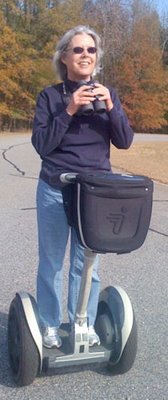Red-tailed and Red-shouldered Hawks
Sunday, December 28th, 2008Today was another gray, cloudy, drizzly day, and I didn’t have much time to be outside, but just by chance saw four hawks in the neighborhood – two Red-tailed Hawks, one Red-shouldered, and one Cooper’s Hawk.
The Red-tailed Hawks were in the woods behind our house, which seems a little unusual, but I’ve seen them like this several times in the past few weeks, low among the trees, rather than perched in the open or soaring. This morning, I first saw one when I stepped out onto the back deck around nine o’clock. It came flying through the trees not far away and settled on the branch of an oak about midway up, a big, hulking, shadowy shape that was impossible to miss when moving, but blended into the misty gray and white background as soon as it was still. In only a minute or two a second Red-tailed Hawk flew across the edge of the woods in the open, showing its dull red tail. The first one took flight, too, and both of them flew around the side of the house and out of sight, with a couple of Crows in pursuit.
A little later in the morning, as we were in the car on our way out, we passed a slim gray Cooper’s Hawk perched in the big red oak at the corner of our cul de sac, in the same vicinity where we’ve often seen it recently.
And then as we drove on, in a stretch of road lined with pecan and cedar trees, a Red-shouldered Hawk suddenly flew low across the road in front of the car, flashing its rufous breast, banded tail and the black and white patterns on its wings – so much more vividly colored than the rather pale and dull-colored Red-tails, though they’re equally handsome and impressive in different ways.
